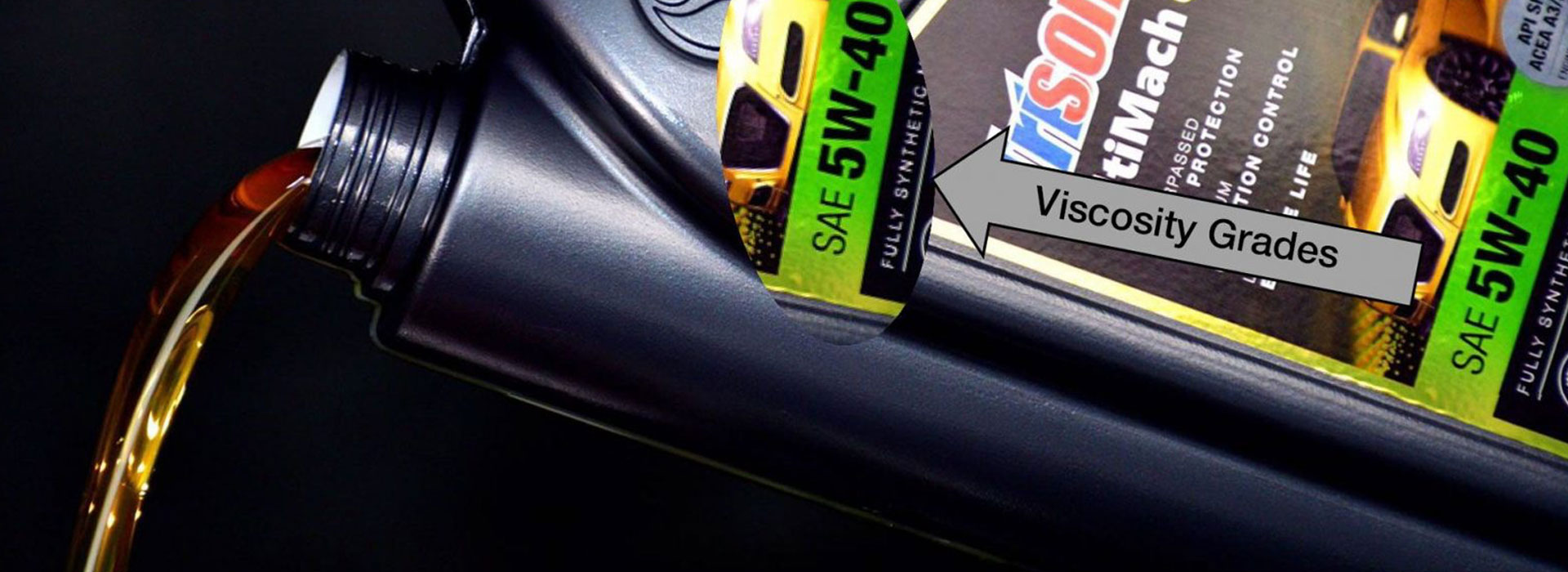
If you look at the shelves in auto parts shops or service centres, you’ll notice engine oils are labelled for all kinds of specific purposes; high-tech engines, new cars, higher-mileage vehicles, pick up common-rail, heavy-duty, SUVs etc. In addition, you’ll see a wide selection of viscosity grades.
Given all the engine oil options out there, choosing the right engine oil for your vehicle would seem like a difficult task.
From our professional’s advice, the first step is quite simple; look at the owner’s manual of your vehicle. To choose the right engine oil, it is always important to start with the viscosity grade. The main requirements for an engine oil are its defined temperature-viscosity properties. Your owner’s manual will list the recommended oil viscosity, whether that’s a standard like SAE 0W-20, SAE 10W-30 etc.
Why is knowing which oil viscosity so important? The oil viscosity must be high enough to maintain a lubricating film, but low enough for the oil to flow around the engine parts under all conditions. The operating temperature has significant impact on the flow properties of an engine oil. Only the right oil viscosity engine oil can provide protection against wear.
So, what is this viscosity standard like SAE 0W-20, SAE 10W-30? SAE J300 is the viscosity standard for engine oil globally which is maintained by SAE International. SAE International, initially established as the Society of Automotive Engineers (based in USA) is now a globally active standards developing organization for engineering professionals in various industries. The Society of Automotive Engineers (SAE) has established a numerical code system for grading engine oils according to their viscosity characteristics. The industry standard used to measure the viscosity is SAE J300. SAE J300 standard is commonly used by the standards organizations like API, ILSAC, JASO and ACEA, and also engine/vehicle manufacturers.
There are 4 key parameters for engine oil viscometrics in SAE J300. These include
(i) high temperature viscosity (KV100),
(ii) high temperature-high shear viscosity @150 C (HTHS) measured by the tapered bearing simulator
(iii) low temperature cold-cranking simulator (CCS)
(iv) low temperature mini-rotary viscometer (MRV)
Before 1975, engine oils available in the market were all mono-grades, such as SAE 30 and SAE 10W. In countries with 4 seasons, thick oil like SAE 30 and SAE 40 used in vehicles would not be suitable during winter. When winter comes, vehicles using such thick oils would find difficulty starting the engine as the oils was too thick to crank in cold weather. According to a NASA scientist, 80% of wear happen when starting an engine. This explains the importance that an engine oil must be able to flow to minimize metal to metal contact between moving parts when starting the engine.
As such, the users in those countries would need to change the right viscosity of mono-grade engine oils in those early years. With the introduction of multi-grade engine oils in 1975, the wrong oil viscosity concern was eliminated.
With the stricter requirements for clean air and fuel efficiency, new engine technology like turbo-charged, common-rail direct injection (CRDi), direct gasoline injection (DGi or DiG) and variable valve timing (VVT) were introduced. These newer engines require higher quality engine oils which normally comes in lower viscosity grades like SAE 0W-20, SAE 5W-30, SAE 10W-30, etc.
In conclusion, ALWAYS refer to the owner’s manual to choose the correct viscosity grade for your vehicle.
In fact, many engine oils in the market today do not meet the SAE J300 viscosity grades and also do not manufacture their engine soils using industry standards formulating guidelines. So, it is important that you choose the engine oils made by trusted brand like TriSonicTM, where all its engine oils are formulated and manufactured in compliance with industry standards.
